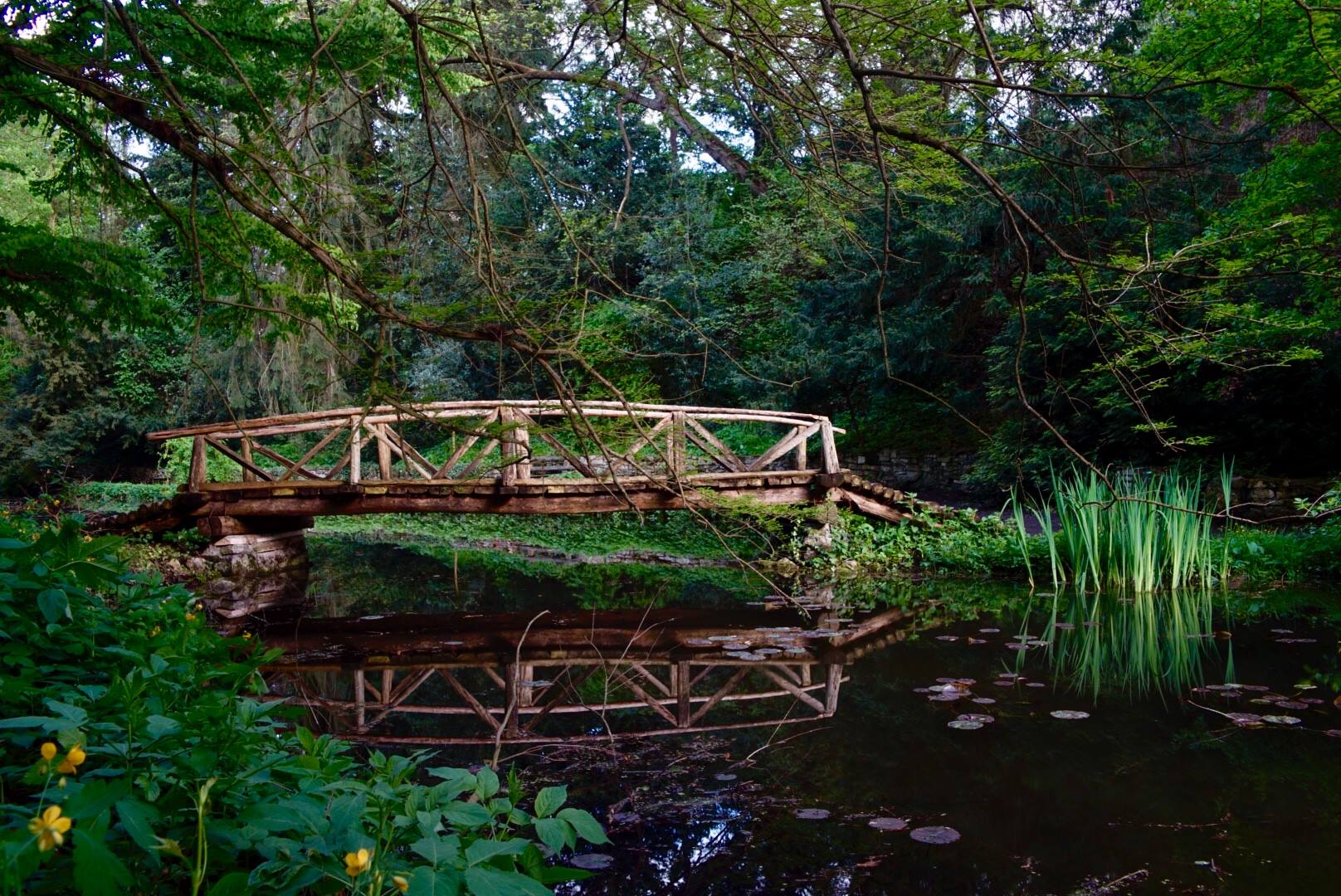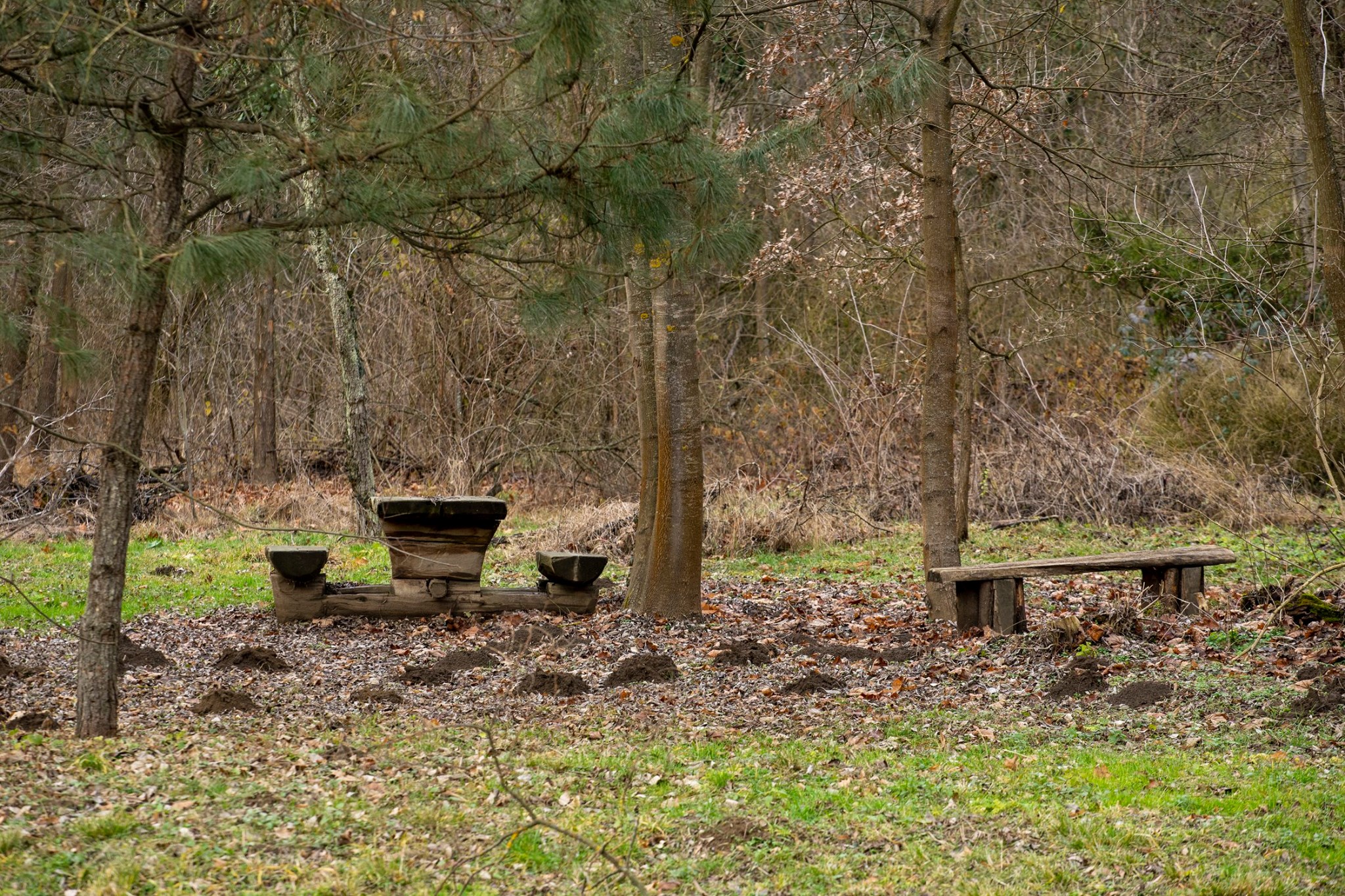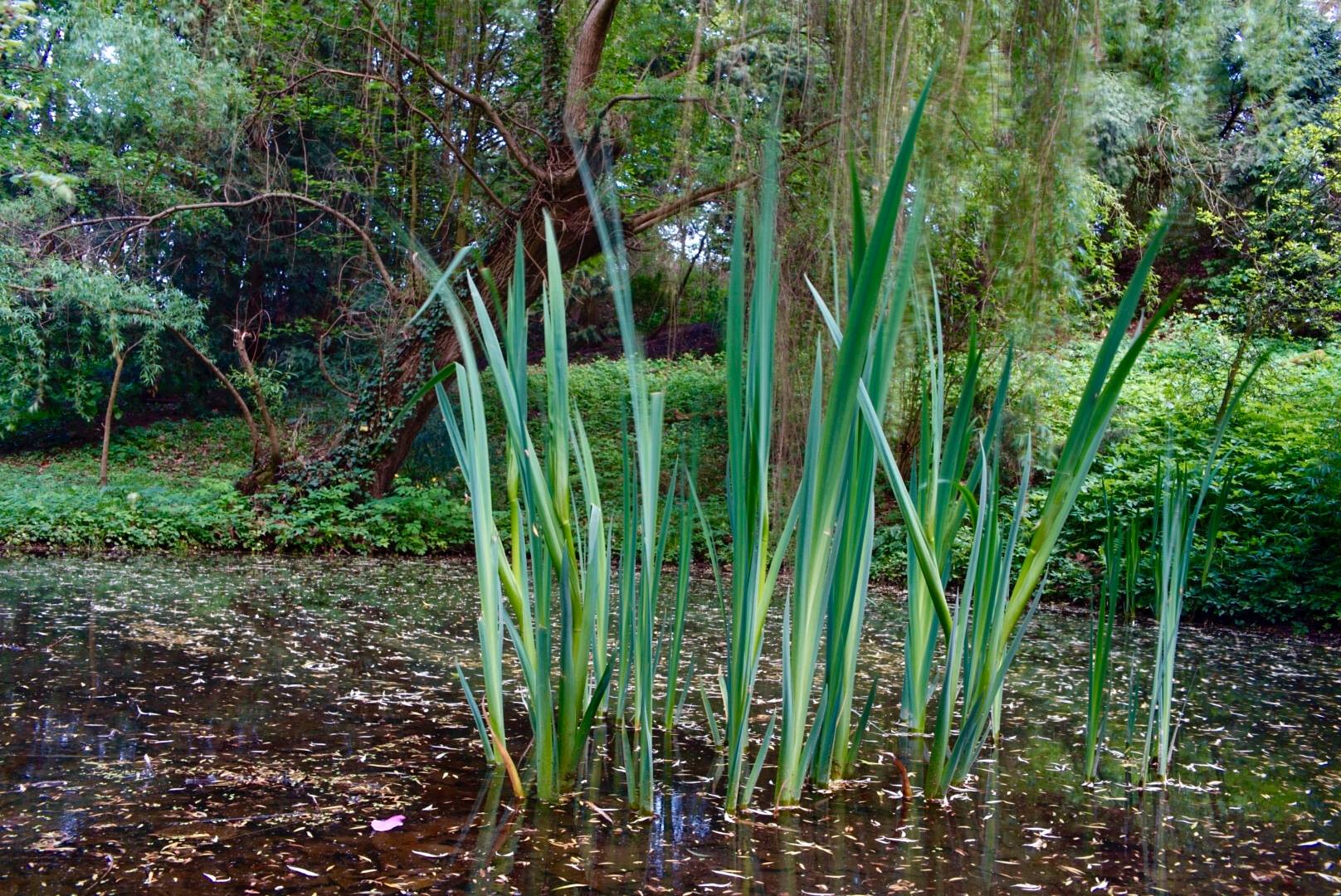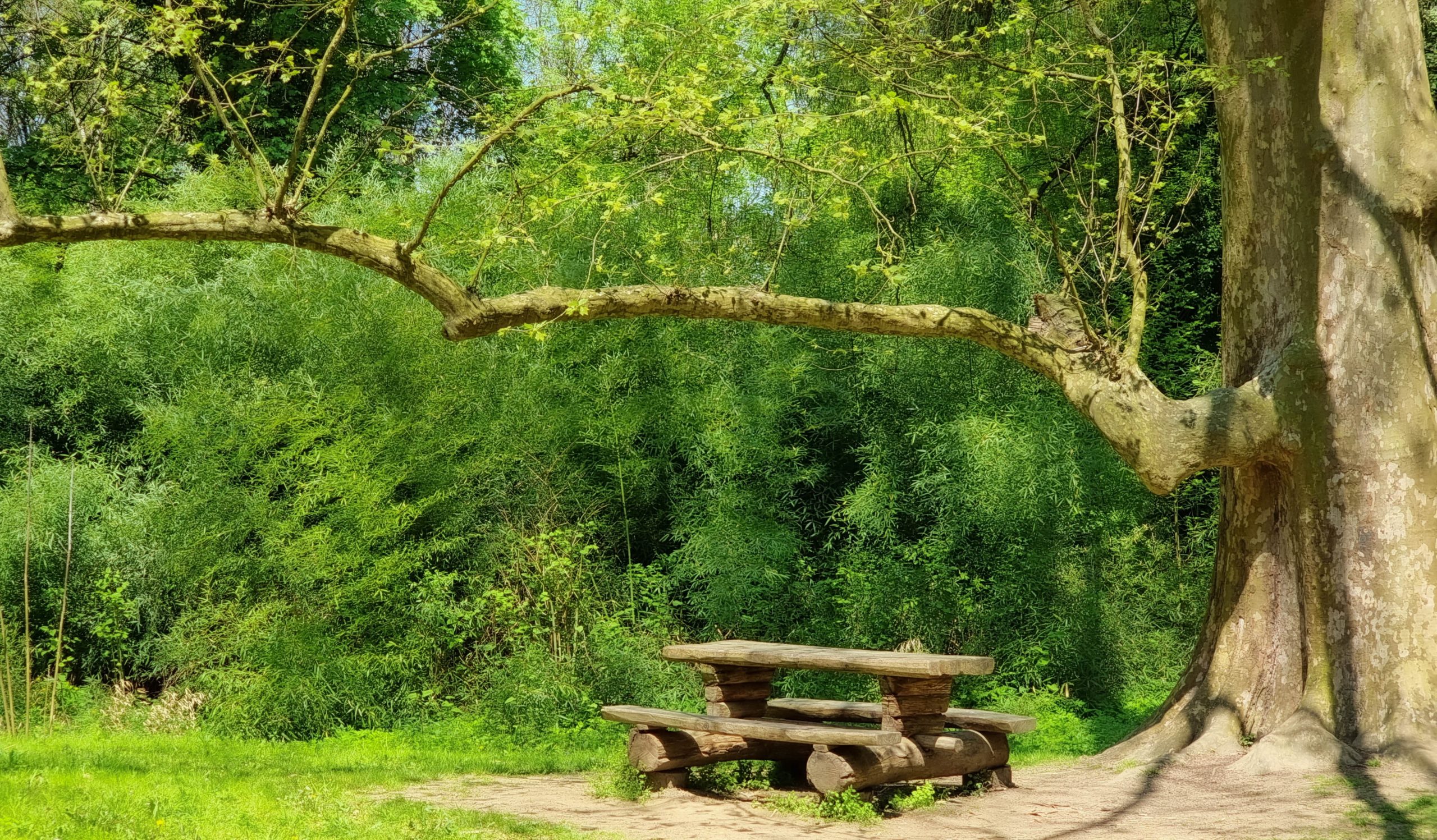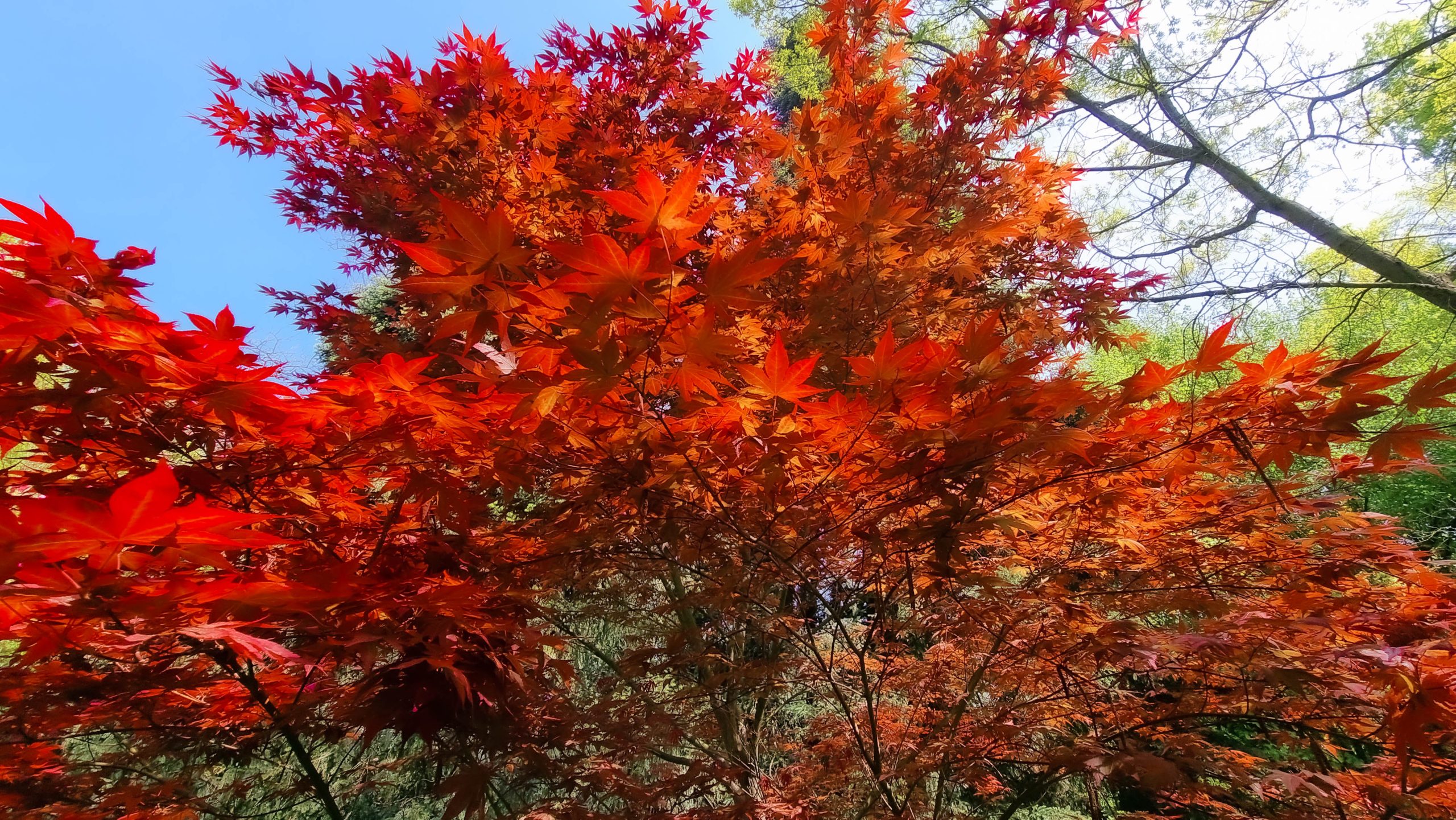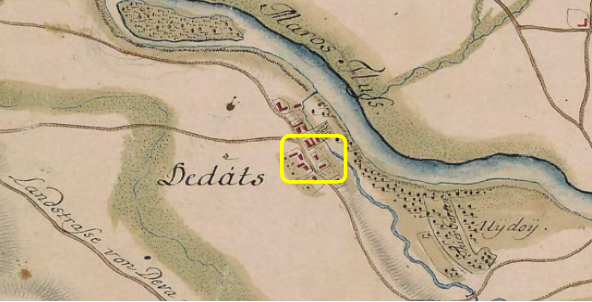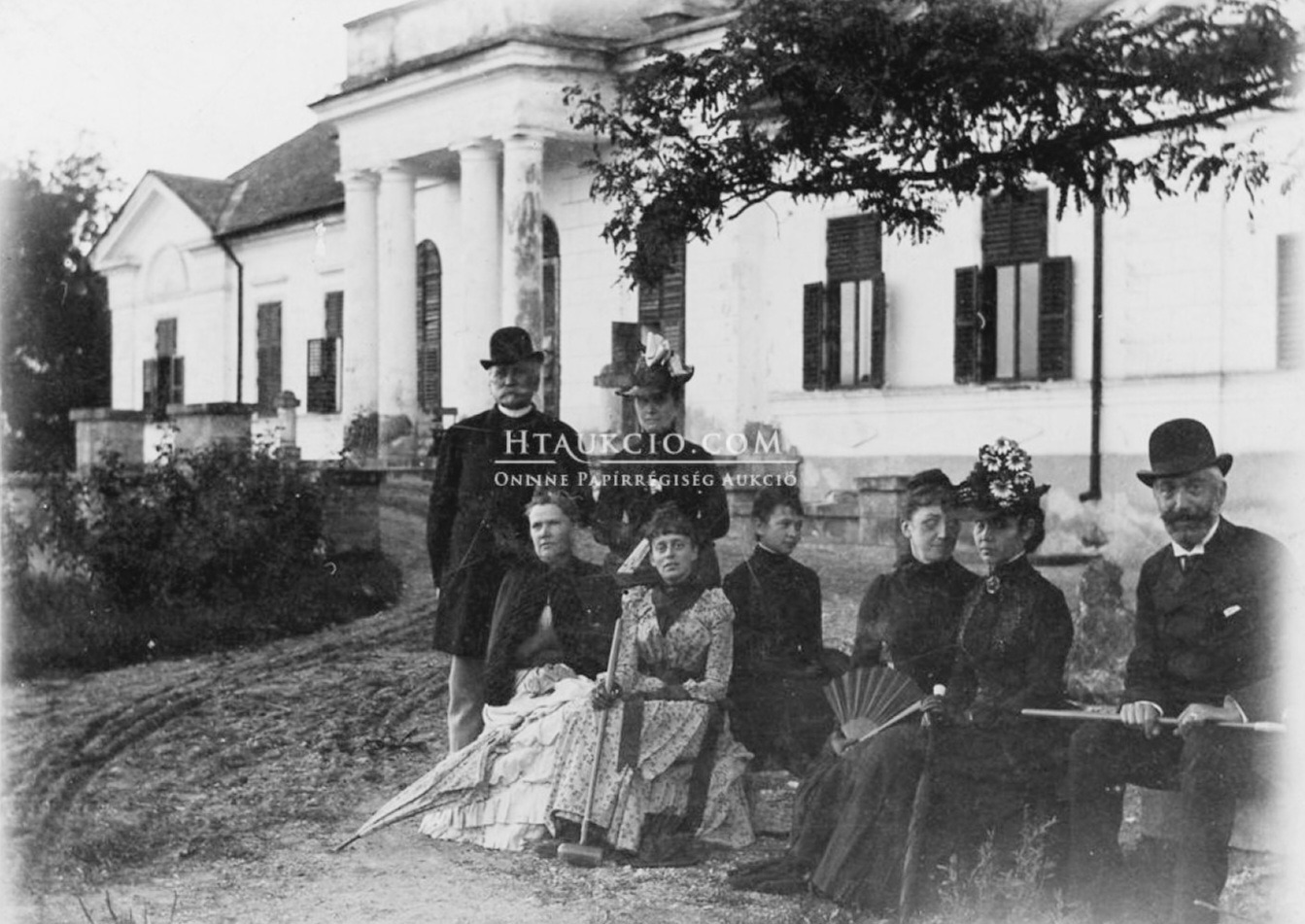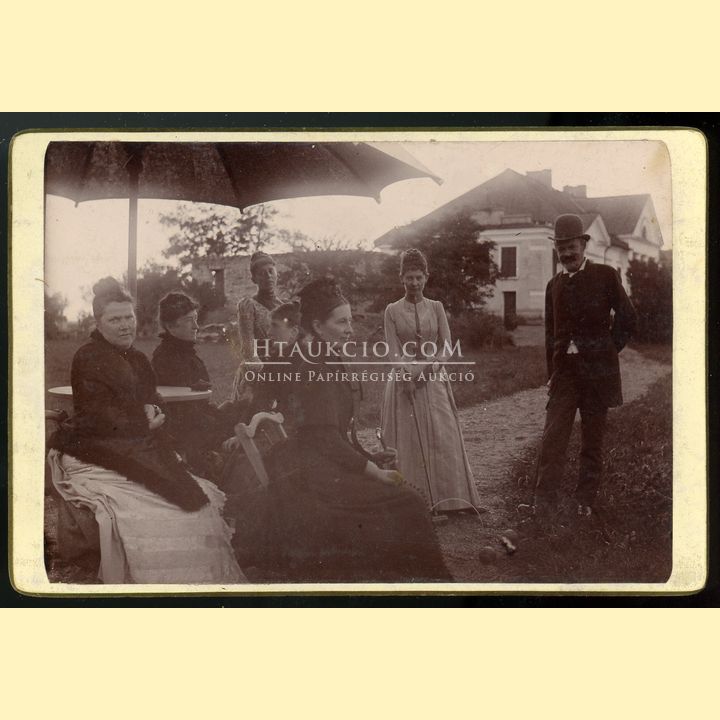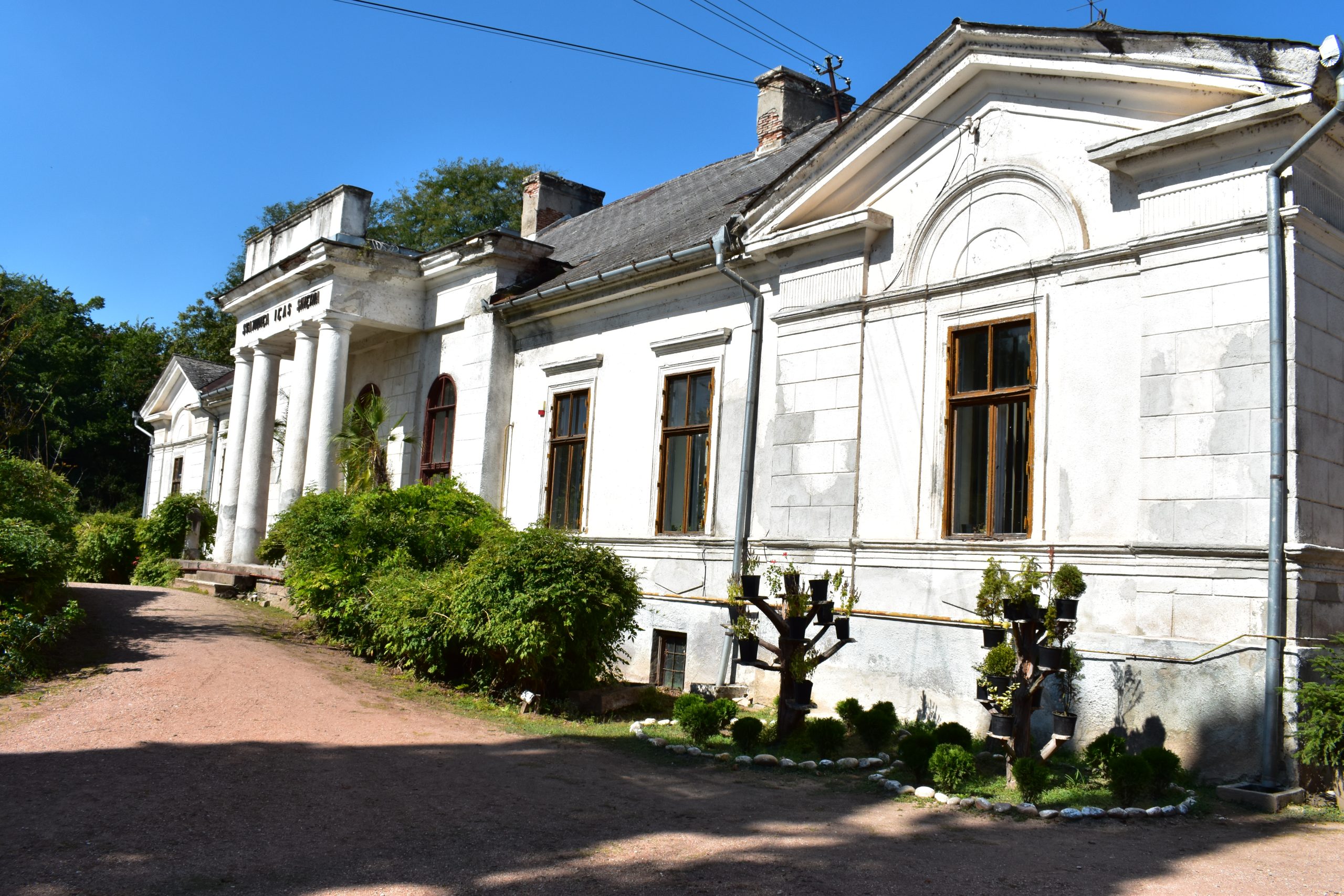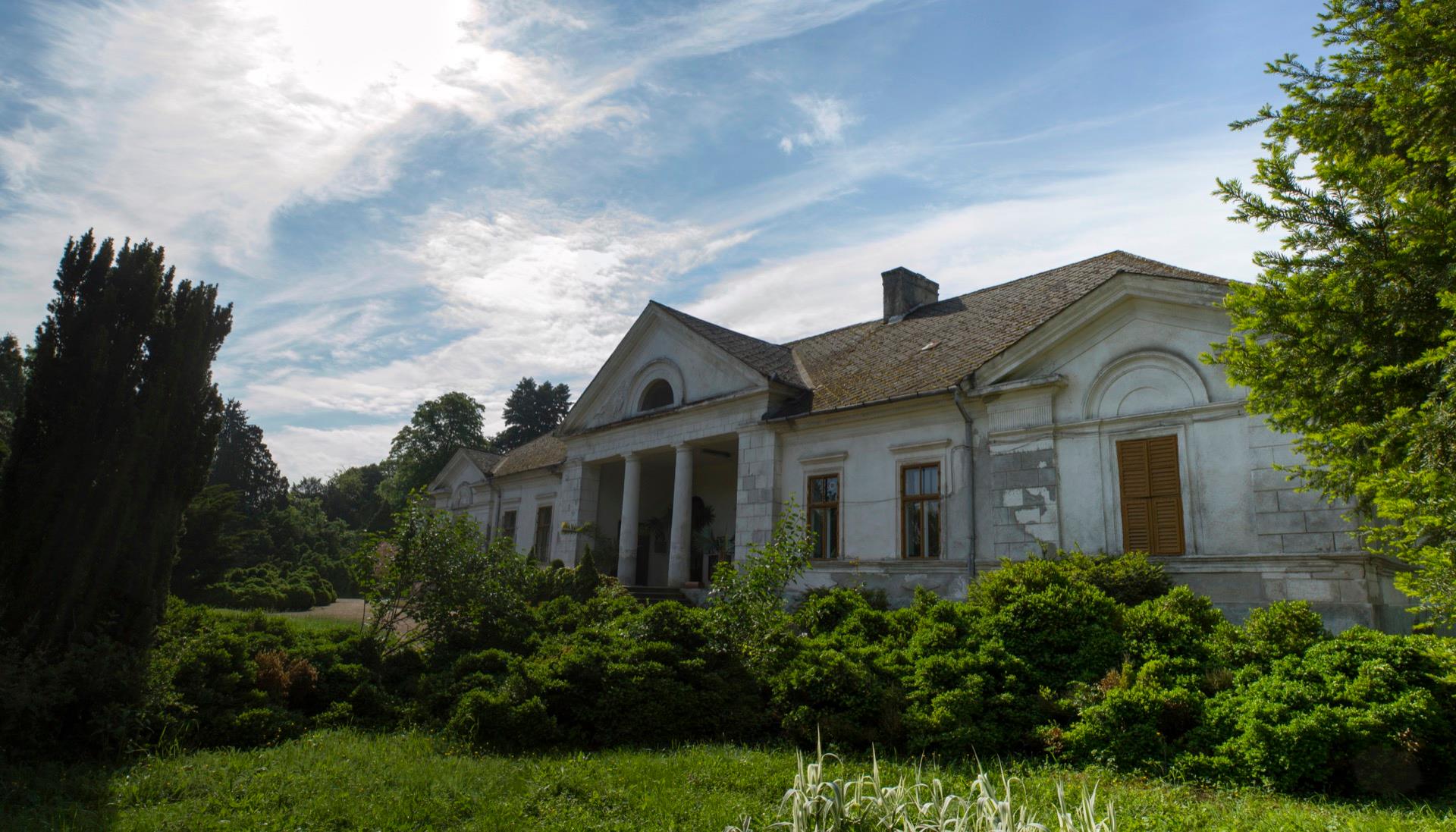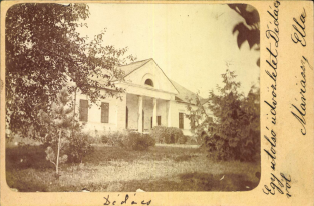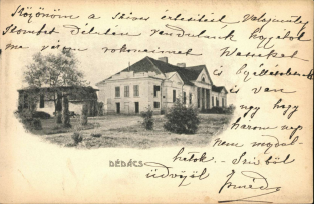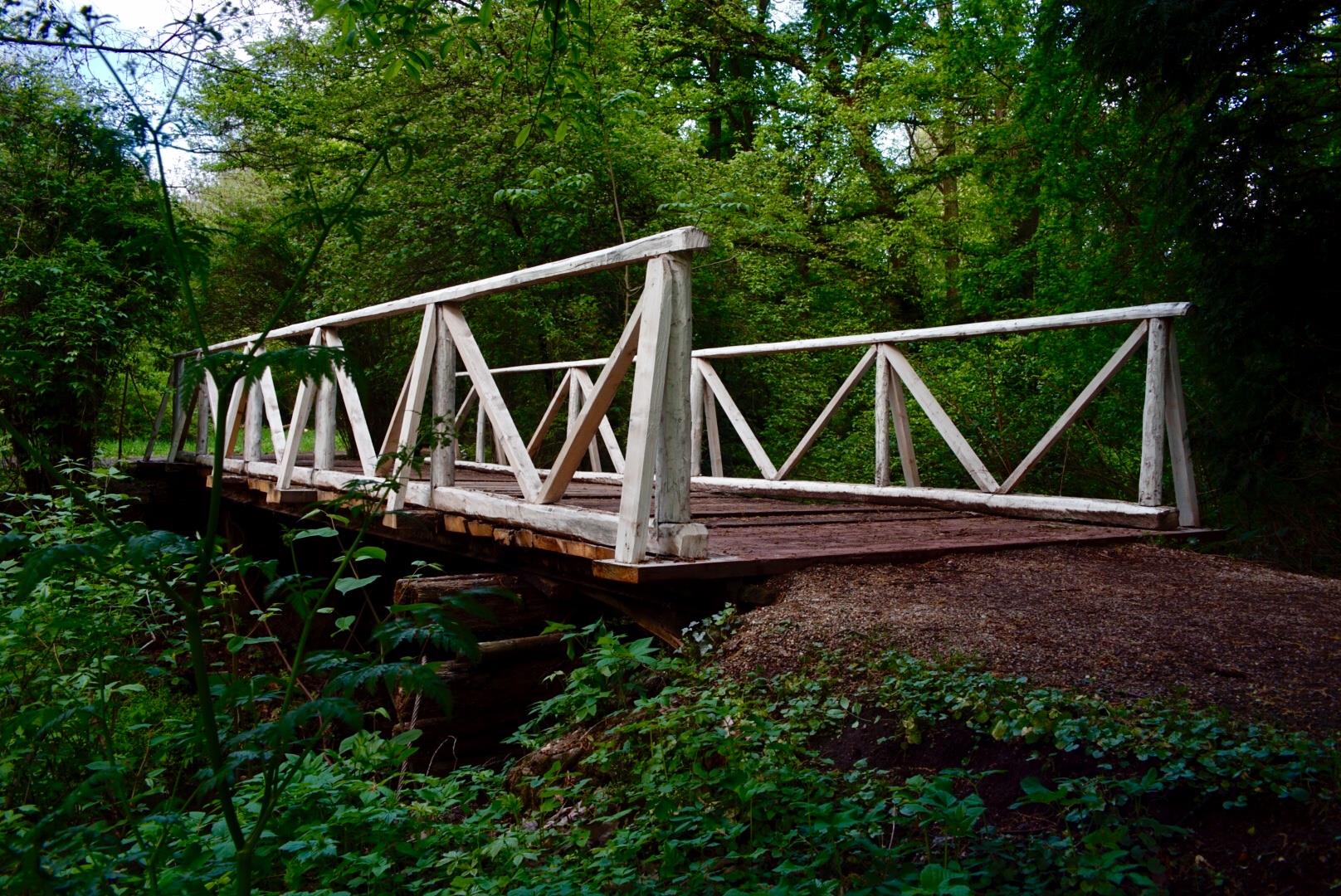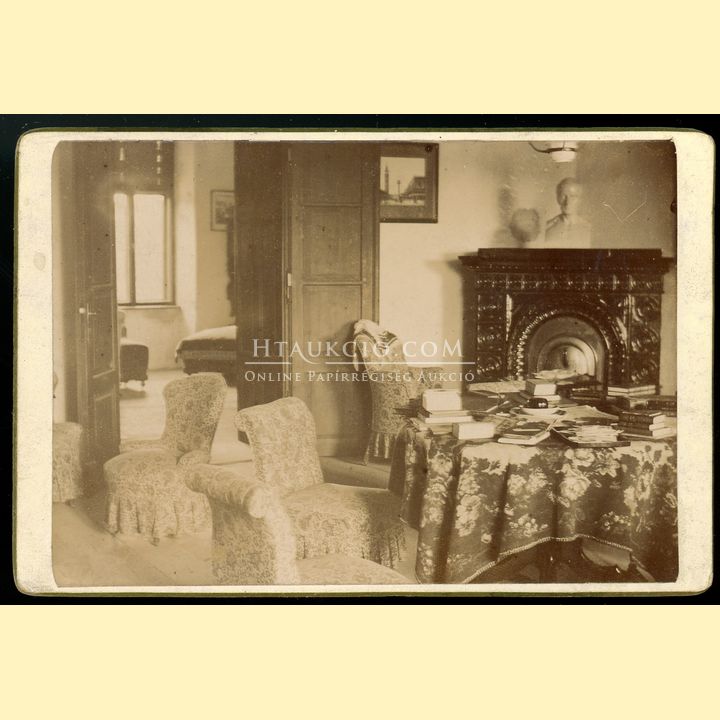See the price list
Simeria Arboretum
History
The Simeria Arboretum has a vast and long history that probably began around the 1750s, during the time of Count Ferenc Gyulay (IV), when the natural meadows of the Mureș meadow were developed as a recreational forest.
The first historical attestation dates back to 1763 , when the Gyulay Family planted various varieties of plants among the secular elms and oaks, then, in a work from 1860, the presence of some avenues of wild chestnuts and acacia was marked. After nationalization, the garden was declared a dendrological park, and it currently houses 2,165 plant species. On the Josephine military map of the mid-18th century, a U-shaped courtyard with a French-style garden across the mill canal is shown.
The Arboretum Simeria belonged successively to noble families of Hungarian origin, who founded and developed it until 1949. The development of the arboretum on a scientific basis began with Béla Fáy, and István Ocskay continued this until 1949. The local microclimate, under -Mediterranean, facilitated the acclimatization of different species of trees and shrubs brought from regions with a similar climate.
In the late 1930s, a pheasantry and a small zoo were established in the garden, and between 1924 and 1939, the park was looked after by the German gardener Ludwig Bucek.
After nationalization, the garden was declared a dendrological park, and it currently houses 2,165 plant species. The land is arranged on two terraces connected by a slope, and the system of paths adapts to the topography of the land, with the mill canal crossing the park, dividing it into two gardens and two small ponds.
In 1954 the Institute of Forestry Research and Experimentation (ICES) establishes the Simeria Resort, which takes as its material base the dendrological park, with an area of 72 ha and a dendrological collection of 251 taxa, according to an inventory made by A. Hulea. At the proposal of the Natural Monuments Commission of the Romanian Academy, based on HCM 518/1954, the Dendrological Park is protected by law, receiving the attribute of “Natural Monument” – dendrological reserve.
In a monographic study published by S. Oczkay in 1954, it can be seen that inside the Simeria Arboretum there is a succession of 9 natural types of forest, as follows: willow; white poplar with willow; white poplar poplar; poplar with elm, willow and scattered alder; elm with poplar and willow; ash with poplar; pure olmet; elm with oak and oak with ash. In the shelter of this natural woody vegetation, a number of exotic species were already introduced such as: Carya sp., Juglans nigra, Liriodendron tulipifera, Acer negundo, Thuja occidentalis Catalpa speciosa, etc.
The importance of the Simeria arboretum
The Simeria Arboretum is a dendrological and landscape reserve with unique value for the national and European heritage. The dendrological park is registered in the List of Historical Monuments in Romania, code HD-II-aB-03448.02.
The Simeria Arboretum is located on the left bank of the Mureș River, in the town of Simeria, Hunedoara County, and covers an area of 69,15 ha. It includes the oldest and most valuable collection of native and exotic woody plants in Romania and among the largest in Europe. The richness of the collection consists in the existence of over 2100 taxonomic units, and its value is given by the appreciable ages of the existing specimens and the uniqueness of some species.
From the very beginning, extensive conservation, improvement and development actions were implemented, mainly aiming at: maintaining and improving landscapes, enriching the collection, creating pilot plantations with exotic species of forestry interest, amplifying acclimatization and selection works and last but not least creating a strong material basis for the multiplication of valuable forest and ornamental species both for the own needs of the Arboretum or other parks and botanical gardens, from the country or abroad, but also for the expansion and development of green spaces in urban centers.
The value of the arboretum is doubled by the originality of the landscapes and the compositional structure of the vegetation, grafted on a varied relief, with lakes and springs, with meadows and winding paths, all combined in a natural, dynamic and always new ensemble. The main, wide and winding avenues highlight the landscape and taxonomic richness through the alternation and contrast between colors, shades and shapes given by the arrangement of vegetation in multiple planes and glades with shrubs and perennials. The smooth or sudden transition from sunny areas to shady and cool corners always arouse the interest and attention of the visitor.
It should be noted that the area between the entrance to the Arboretum and the Strei Canal has the vegetation arranged in a neat style, reminiscent of the geometric one, and includes a greater number of rare species, and the area that passes the Strei Canal has the appearance of a forest-park , dotted with meadows. There is also an area of 7.7 ha that has developed naturally, no exotic species have been introduced and which we want to arrange in the future in such a way that visitors to the Arboretum can see a sample of the natural meadow vegetation.
Trees of exceptional size can be seen in plot 50, where you can admire a specimen of white poplar with a diameter of 2.10 m (the “giant” of the Arboretum), and in plot 47 you can find the veteran oaks, with a diameter of 1, 74 m and a height of 33 m. These impressive trees are not unique in the arboretum, they are also accompanied by other specimens of indigenous or even exotic species.
Extending the research in the field of biodiversity specific to the Simeria Arboretum, in 2005 [Pastre, M. and Coandă, C.] a (partial) list of the herbaceous flora was finalized, published in the monograph of the Simeria Arboretum, which includes 88 taxons, grouped by flower color, specifying names (scientific and popular) and preferred habitats.
Among the old introduced groups, those of Virginia juniper, thuja, Californian cypress, pines, spruce, beech clumps, acacias, large catalpa and black walnut appear especially prominently.
A visit to the Arboretum is equivalent to going through the woody flora of several geographical areas: 14% European species, 25% North American, 47% Asian, the rest of the species being common to 2 or even 3 continents.
Visiting schedule: daily between 8:00 a.m. and 8:00 p.m., by paying the visiting fee.
Exact address: Arboretum Simeria, Biscaria street no. 1, 335 900 – Simeria, Hunedoara county. Phone/fax: 0254-261254
Béla Fáy Castle
History
Béla Fáy Castle“Castle Béla Fáy” is of particular importance in the urban history and memory of the local community in Simeria, both through its original connection with important personalities and through its architecture which recalls the beginnings of the 17th century settlements. The current town of Simeria is the result of the merger of several rural settlements, the most significant being: Piskitelep (Simeria) and Dédács (Biscaria). Today, only the main street remains from the Biscaria area, which was integrated into the city of Simeria and which retains the name of the former settlement. At the end of this street is the entrance to the grounds of Béla Fáy Castle and the Simeria Arboretum.
The noble residence of Biscaria, with a history of almost three centuries, was originally built in the second half of the 17th century or the following century by the Gyulay family. On the Josephine military map of the mid-18th century, a U-shaped courtyard with a French-style garden across the mill canal is shown. T he property passed in the 19th century to the Kuun family, then to the Fáy family, and finally to István Ocskay in the 20th century.
The Gyulay family built a mansion in Biscaria, at the latest in the first half of the 18th century. The first mention of the residence appears during the peasant uprising of 1784, when on November 7 the Biscaria courtyard was set on fire. The domain was affected by the violent attacks of the peasants, who looted and destroyed the noble properties in the area. In the second half of the 18th century, the estate became the property of General Count Ferencz Gyulay (IV.), who married Karolina Haller and inherited his family estates.
The Gyulay family mansion in Biscaria offered a space spacious enough to accommodate a large noble family and to receive important guests. In 1816, the Hungarian poet and philologist Ferenc Kazinczy was invited to spend a month in Biscaria at the request of Zsuzsanna Gyulay. At the request of the poet, who requested that his visit to Biscaria remain memorable, Countess Irma Fáy organized the Kazinczy Festival on September 25, 1881, in collaboration with the History and Archeology Society of Hunedoara County. During this cultural event, a monument was unveiled under the poet’s favorite elm, consisting of a two-meter high quadrilateral prism with a goblet in the upper part. A harp and a butterfly were carved on one of the sides of the obelisk, and below it was engraved the inscription: “Kazinczy Ferenc pészátz helye 1816” (Favorite place of Kazinczy Ferenc 1816), according to the design of the poet himself.
Architecture
The Biscaria residence still retains its neoclassical characteristics, a style adopted by Hungarian architecture in the first half of the 19th century. Between 1800 and 1840, Hungary and Transylvania, regions of the Habsburg Empire, were influenced by the Enlightenment that had dominated Western Europe in the previous century. This period, known as the Age of Reforms in Hungarian historiography, was an era of progress and revival of national consciousness. While the great noble families kept a traditionalist mindset, the small and middle nobility and the bourgeoisie in the cities were increasingly consolidating their position.
The noble residence of Biscaria is a construction with an elongated rectangular plan, having a symmetrical volume in relation to a south-north axis. The southern facade is dominated by a central rezalit, the only one equipped with a rectangular tympanum, thus marking the main entrance to the mansion. This is preceded by a portico raised slightly above ground level, built of large blocks of red Uroi andesite, accessible by a limited number of steps and flanked by two pairs of Tuscan columns.
The ballroom opens generously to a covered terrace, surrounded by columns, and the imposing steps, placed in the axis of symmetry of the building, facilitate access to the park. The pediment of the central elevation on the northern facade features a semicircular skylight/ventilator, adding a distinctive and functional element to the mansion’s architecture.
The mansion building was organized according to the accessibility and the orientation of the land, with the main facade facing south and the facade of the main room facing north, facing the generous park area, to benefit from shade and coolness on hot summer days.
This layout is also found in other rural residences in Transylvania, such as Teleki castle in Căpâlnaș (Arad county), Kövér-Appel castle in Fântânele (Arad county), Bethlen castle in Arcalia (Bistrița Năsăud county), Béldy Pál castles and Béldy Ladislau from Budila (Brașov county), Haller castle from Hoghiz (Brașov county), Brukenthal castle from Sâmbăta de Jos (Brașov county), Banffy castle from Bonțida (Cluj county), Dégenfeld castle from Cuci (Mureș county) ), Bethlen castle from Dragu (Sălaj county), Hatfaludy manor from Hida (Sălaj county), Wesselényi castle from Jibou (Sălaj county), and others.
During the Revolution of 1848, the Biscaria mansion and park suffered serious damage, which was repaired between the 1870s and 1880s.
Béla Fáy de Fáji, coming from an old noble family, was active in mining and philosophical literature, being a corresponding member of the Hungarian Academy of Sciences. After the death of Géza Kuun in 1905, Fáy became president of the History and Archeology Society of Hunedoara County. After his death in 1915, the noble residence and the park became the property of the Ocskay family, who, although a military man by profession, brought a period of glory to the manor, continuing the work of arranging the arboretum started by Fáy.
Bibliography
Bilibók 2016 – Bilibók R., A történet egyedisége, az egyed története. Gyulay Lajos a 1848-49-es forradalom alatt/mellett, în Veress K. (Ed.), Egyediség és véletlen. Interdiszciplináris párbeszéd IV, Cluj-Napoca, 2016, p. 65-72.
Bodó 2021 – Bodó, C., Din activitatea Societății de Istorie și Arheologie a comitatului Hunedoara, Cluj-Napoca, 2021.
Bőjthe 1891 – Bőjthe Ö., Húnyadmegye sztrigymelléki részének és nemes családainak története, tekintettel a birtokviszonyokra, Budapest, 1891.
Coandă, Radu 2006 – Coandă, C., Radu, S., Arboretumul Simeria – Monografie, București, 2006.
Fekete 2007 – Fekete A., Transylvanian Garden History. Castle Gardens Along the Maros River, Cluj-Napoca, 2007.
Gaspár-Barra, Gaspár-Barra, Kun-Gazda 2019 – Gaspár-Barra R., Gaspár-Barra Sz., Kun-Gazda G., Hunyad megyei magyar ertéktár, I. kötet, Deva, 2019.
A Hóra-világ 1902 – A Hóra-világ Hunyadmegyében, în HTRTÉ, 13, 1902, p. 85-101
Hunyadmegyei oklevéltár 1899 – Hunyadmegyei oklevéltár (Kun Róbert hagyatéka), în HTRTÉ, 10, 1899, p. 70-102.
LMI 2015 – List of Historical Monuments 2004, 2010, respectively 2015 (Ministry of Culture, National Institute of Heritage).
Kováts 2007 – Kováts D., Kazinczy Ferenc útján Erdélyben, în Honismeret 35/6, 2007, p. 77-86.
Kun 1888 – Kun R., Adalékok a Hóra-lázadás történetéhez, în HTRTÉ, 4, 1888, p. 41-74.
Kuun 1894 – Kuun G., Monda és történet, în Erdély, 1894, p. 224-228.
Kuuun 1899 – Kuun G., Emlékbeszéd Torma Károlyról, în HTRTÉ, 10, 1899, p. 1-40.
Mara 2001 – Mara E., Hátszeg-vidéki kúriák, în Műemlékvédelmi Szemle, XI/1-2, 2001, p. 127-161.
Milea 2013 – Milea, A., Parcul castelului Béldy Ladislau din Budila (judeţul Braşov), în Transsylvania Nostra, 4, 2012, p. 27-38.
Milea 2012 – Milea, A., Grădini istorice din Transilvania: primi paşi pentru o cercetare sistematică, în Transsylvania Nostra, 4, 2012, p. 48-60.
Ocskay 1954 – Ocskay S., Specii exotice în parcul Simeria, în ICES – Cultura speciilor lemnoase exotice, București, 1954, p. 81-156.
Schreiber 2008 – Schreiber I., Kastélyok és parkok a dévai medencében, Deva, 2008.
Sisa 2016 – Sisa J., Neo-Classicism (1800–1840). Domestic architecture, în J. Sisa (Ed.) Motherland and Progress. Hungarian Architecture and Design 1800-1900, Basel 2016, p. 142-147.
Szucher 2016 – Szucher E., Ellopott piski történelem, în Erdélyi Napló, 2016. noiembrie 3, p. 8-10.


